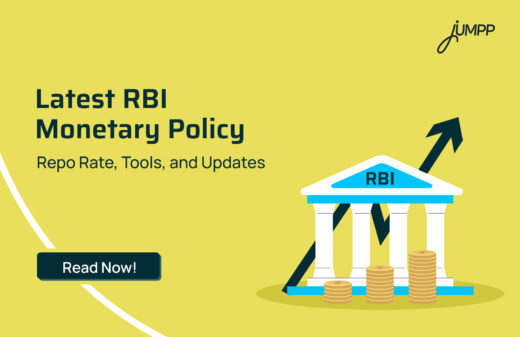How Loading in Health Insurance Impacts Your Coverage and Costs

When you select any health insurance plan, the price you see in the brochure seems simple and affordable enough. You think, “This is what I will pay every year.” But once you start filling out the forms, you realise there can be extra charges added to your premium. One of the most common is loading in health insurance.
This is the extra charge in the form of a higher premium that you have to pay if your insurer sees you as a higher risk. While this makes your plan more expensive, it also helps you get coverage for health conditions or situations.
Let’s explore the factors affecting loading in health insurance!
Loading Insurance Definition
In general insurance terms, loading is defined as:
An additional charge is added to the basic premium to cover the extra risk associated with a particular policyholder.
It is essentially the insurer’s way of balancing the higher probability of claims. Loading is not unique to health insurance; it can appear in life, travel, or motor insurance. However, it is particularly important in health insurance, where age, health conditions, and lifestyle factors can significantly impact risk.
What is Loading in Health Insurance
Loading in health insurance refers to an additional charge that is added to your base premium. This is a popular way for insurers to adjust premiums according to the risk a particular policyholder represents. Loading is added to your premium when the insurer considers you a higher risk than average.
While the base premium is calculated using standard assumptions. These factors include age, general health, and sum insured.
The decision to include loading usually happens due to factors like pre-existing medical conditions, lifestyle habits such as smoking, age, or a history of frequent claims.
For example, if a standard policy costs ₹10,000 and the insurer applies a 20% loading for high blood pressure, your premium becomes ₹12,000. Loadings can be permanent, lasting the entire policy term, or temporary. That means, these can also be applied for a few years and sometimes reduced if no claims are made.
You need to understand that loading in health insurance increases your cost. But it does not increase your coverage, so it is always wise to compare policies and understand the criteria before buying.
Loading Charges in Health Insurance in India
Loading charges are usually calculated either as a fixed amount or as a percentage of the base premium. However, the exact loading charges in health insurance are practically dependent upon factors such as health conditions, age, lifestyle, and family history.
But what are the factors that can affect the loading charges in health insurance?
Let’s explore!
Factors Affecting Loading in Health Insurance
There are multiple factors that can affect the overall loading charges in your health insurance policy.
1. Age of the Policyholder
Your age is one of the most important factors in health insurance loading. As we grow older, the chances of health problems increase. Thus, the premiums generally go up
In India, most insurers increase premiums progressively with age.
For instance, a 25-year-old buying a 5 lakh policy may pay a base premium of 5,000 rupees per year, whereas a 50-year-old may pay 9,000 to 10,000 rupees for the same coverage due to age-based loading.
2. Smoking Habits
Tobacco use, including smoking or chewing tobacco, has a major impact on health insurance premiums. Smokers are more prone to diseases such as lung issues, heart problems, and certain cancers. So, insurers charge more.
For instance, a 30-year-old non-smoker may pay approximately ₹6,000 per year for ₹50 lakh coverage. However, a smoker of the same age could pay around ₹9,500 per year. This is because insurers expect higher medical costs for smokers.
3. Pre-existing Medical Conditions
Insurance companies assess your existing medical conditions through a declaration form. Not only this, but they sometimes even require a medical checkup. Chronic illnesses or previous surgeries often attract health-based loading.
4. Family History
A family history of heart disease, cancer, or diabetes may result in higher loading for an individual. Insurers use this information to calculate the probability of claims in the future and adjust premiums accordingly.
5. Occupation
Your profession can also affect how much loading is applied. There are multiple jobs that can expose you to higher health risks. These could include occupations like working with chemicals, heavy machinery, construction, mining, or even frequent travel to high-risk areas. This can increase the likelihood of injury or illness.
6. Obesity
Being overweight or obese can increase the risk of several health problems. You might have heart disease, high blood pressure, diabetes, and joint issues.
Insurance companies consider this when calculating your health insurance premium because people with these conditions are more likely to make medical claims.
7. Place of Residence
Where you live can influence your health insurance premium as well. People living in areas with limited access to quality healthcare, higher pollution levels, or regions prone to certain diseases may face higher premiums.
Ready to take full control of your health and wealth?
Alongside securing the right insurance coverage, track your spending and plan better with our Monthly Budget Planner App—your one-stop tool for smarter financial decisions.
Types of Loading in Health Insurance
There are two main types of loading you should know about:
1. Initial Premium Loading
This is the extra charge that is applied when you first buy your health insurance policy. Insurance companies look at your risk profile before deciding on your premium.
The common things that are taken into consideration include your age, your health condition, your lifestyle habits, occupation, etc.
2. Renewal Premium Loading (Mostly Gone Now)
Earlier, some insurers used to increase your premium when you renewed your policy if you had claimed frequently in the previous year. The idea was simple. People who often claim are more likely to claim again. But this created stress for people who were already dealing with serious illnesses.
Because of this, regulations introduced in 2013 stopped insurers from increasing renewal premiums based on claims during the first three years.
Loading vs Exclusions in Health Insurance.
Loading in health insurance, as we already explored, is an extra amount added to your premium.
Exclusions, on the other hand, are specific conditions or treatments that are not covered under your policy. Insurers use exclusions to limit their liability and keep premiums affordable for everyone.
The key difference is that with loading, you pay more but receive coverage, while with exclusions, you might pay the standard premium, but certain conditions are completely left out.
How to Reduce or Manage Loading
While loading is based on risk and cannot always be avoided, there are strategies to manage it:
- You must always plan and purchase your health insurance at a younger age. This can help reduce the age-related loading charges.
- It is important to maintain a healthy lifestyle.
- You should always provide a complete and honest medical history.
- Do not forget to do proper research and compare policies.
Find out what is health insurance and choose the right plan for your family now!
By understanding loading, policyholders can make the right decisions, reduce unnecessary costs, and choose the right insurance plan for their needs.
Loading in Health Insurance- FAQs
Loading in medical insurance is an extra charge added to your premium when the insurer sees you as a higher risk. It lets you get coverage even if you have health conditions or habits that increase the chance of claims.
A loading on insurance is the additional amount you pay over the standard premium. It reflects factors like age, health, lifestyle, or occupation that make you more likely to need medical care.
Loading in health insurance is usually added as a fixed amount or a percentage of your base premium. For example, a 20% loading on a ₹10,000 policy increases your premium to ₹12,000.
Loading charges in health insurance extra costs added to your insurance premium due to factors that increase your risk. These charges let the insurer provide coverage you might not get at the standard rate.
The loading amount in medical insurance is the extra premium added to your base insurance cost. It accounts for risks such as age, medical history, lifestyle, or occupation.
Loading in medical/health insurance is not mandatory for everyone. It only applies if the insurer considers you a higher risk, so healthy, low-risk individuals usually pay the standard premium.






